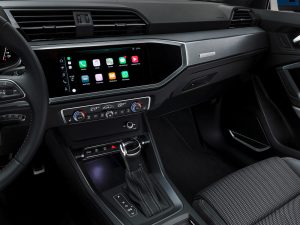In today’s world, drivers are faced with a complex dilemma: how to balance their desire for performance with the growing necessity of environmental responsibility. With concerns about climate change, pollution, and dwindling natural resources, the automotive industry is under increasing pressure to produce vehicles that are not only powerful and efficient but also environmentally friendly. This article explores the challenges and opportunities in navigating this delicate balance between performance and environmental responsibility.
The Appeal of Performance

For many drivers, the allure of performance is undeniable. The thrill of accelerating from 0 to 60 mph in mere seconds, the adrenaline rush of taking tight corners with precision, and the sense of control and power behind the wheel are all factors that contribute to the popularity of high-performance vehicles. Whether it’s sports cars, muscle cars, or luxury sedans, there is a segment of the market that values speed, agility, and horsepower above all else.
The Environmental Imperative
However, the pursuit of performance comes at a cost, particularly when it comes to the environment. Traditional internal combustion engines rely on fossil fuels such as gasoline or diesel, which emit greenhouse gases and other pollutants into the atmosphere. These emissions contribute to climate change, air pollution, and respiratory illnesses, posing significant threats to public health and the environment.
The Rise of Eco-Friendly Technologies
Recognizing the need for change, automakers have been investing heavily in eco-friendly technologies to mitigate the environmental impact of driving. Electric vehicles (EVs), hybrids, and fuel cell vehicles are becoming increasingly prevalent on the market, offering drivers alternatives to traditional gasoline-powered cars. EVs, in particular, have gained traction in recent years, thanks to advancements in battery technology, increased charging infrastructure, and government incentives aimed at promoting clean transportation.
The Performance-Efficiency Tradeoff
One of the main challenges in developing environmentally friendly vehicles is reconciling performance with efficiency. Historically, there has been a perception that eco-friendly cars sacrifice speed and power in favor of fuel efficiency and emissions reduction. While this may have been true in the past, advancements in engineering and design have blurred the lines between performance and efficiency, allowing automakers to offer vehicles that deliver both.
Engineering Innovation
Engineers are constantly pushing the boundaries of what is possible, leveraging cutting-edge technologies to improve the performance and efficiency of vehicles. From lightweight materials and aerodynamic designs to advanced propulsion systems and regenerative braking, there are myriad ways in which engineering innovation is driving progress in the automotive industry. These advancements not only enhance the driving experience but also reduce fuel consumption, emissions, and environmental impact.
The Role of Consumer Demand
Ultimately, the success of environmentally friendly vehicles hinges on consumer demand. While there is a growing segment of the market that prioritizes sustainability and eco-friendliness, many drivers still place a premium on performance and power. In order to accelerate the transition to cleaner transportation, automakers must strike a balance between meeting consumer preferences and promoting environmental responsibility. This may involve educating consumers about the benefits of eco-friendly technologies, incentivizing sustainable choices, and offering a diverse range of options to suit different needs and preferences.
Government Regulation and Policy
Government regulation and policy also play a crucial role in shaping the automotive landscape. In recent years, we have seen an increasing number of countries and regions implement stricter emissions standards, fuel economy regulations, and incentives for electric and hybrid vehicles. These policies not only encourage automakers to invest in cleaner technologies but also provide consumers with more options for reducing their environmental footprint.
The Future of Driving
Looking ahead, the future of driving will likely be defined by a combination of performance, efficiency, and environmental responsibility. As technology continues to evolve and consumer preferences evolve along with it, we can expect to see a greater emphasis on sustainability and eco-friendliness in the automotive industry. From electric supercars to hydrogen-powered trucks, the possibilities are endless when it comes to reimagining the vehicles of tomorrow.
Visual Table: Key Points
| Aspect | Description |
|---|---|
| Performance | Thrill of speed and acceleration |
| Environmental Responsibility | Mitigating carbon emissions and air pollution |
| Technological Innovations | Hybrid, electric, and hydrogen-powered vehicles offer sustainable alternatives to traditional engines |
| Eco-Friendly Driving Practices | Tips for reducing fuel consumption and minimizing environmental impact |
| Automakers’ Role | Importance of integrating sustainability into design and manufacturing processes |
| Policy Impact | Government regulations and incentives to promote greener transportation |
Comparative Table: Performance vs. Environmental Impact
| Feature | Performance | Environmental Impact |
|---|---|---|
| Acceleration | High | Variable |
| Speed | Fast | Variable |
| Emissions | Potentially High | Depends on Vehicle Type |
| Fuel Efficiency | Varies | Higher in Green Vehicles |
| Environmental Footprint | Larger | Smaller in Green Vehicles |
Conclusion
The driver’s dilemma of balancing performance and environmental responsibility is a complex and multifaceted issue that requires careful consideration from all stakeholders. While the allure of high-performance vehicles may be strong, it is imperative that we prioritize sustainability and strive to minimize the environmental impact of driving. By embracing innovation, investing in clean technologies, and promoting responsible consumer choices, we can create a future where drivers can enjoy both the thrill of the open road and the satisfaction of knowing they are driving responsibly.




